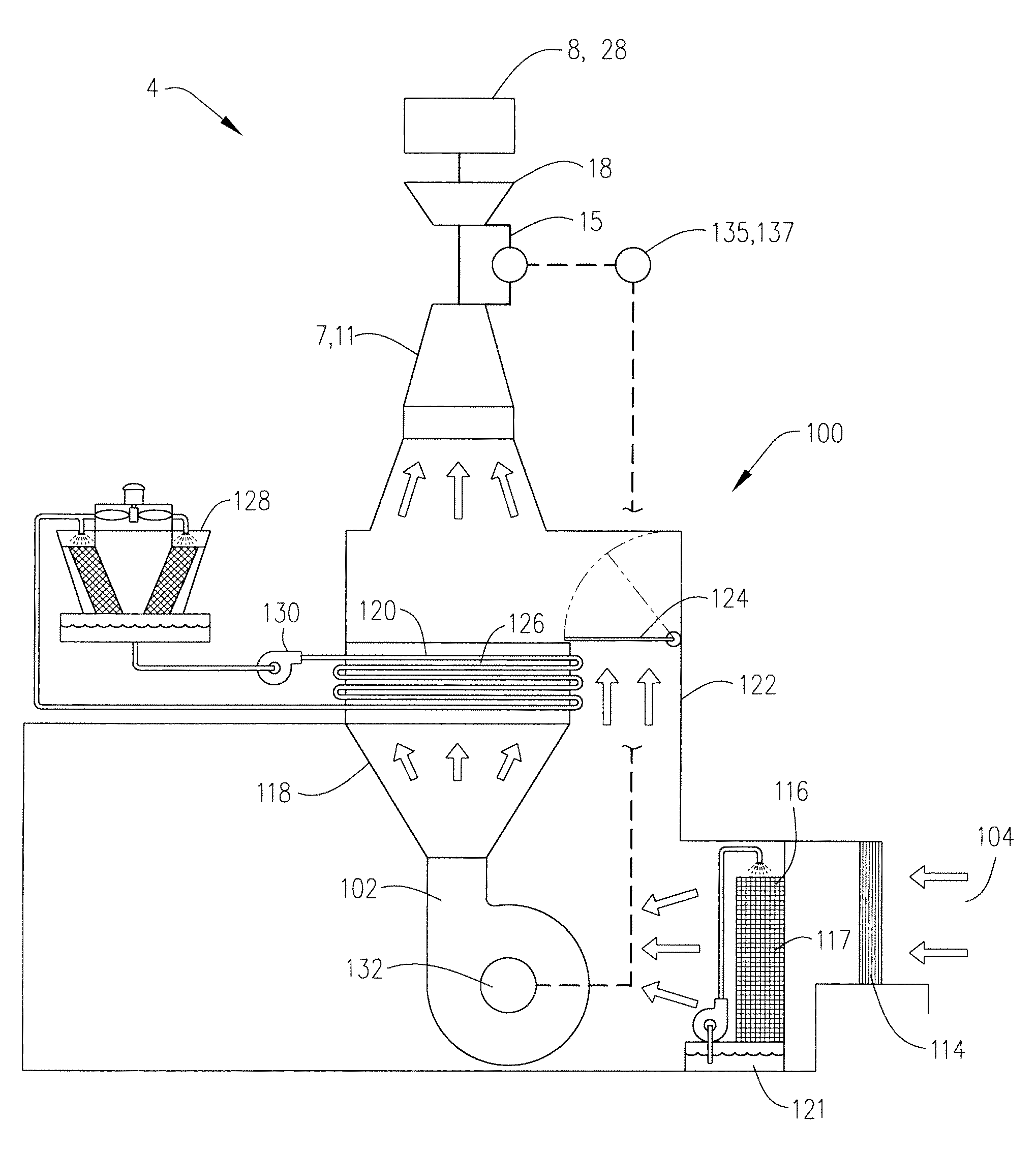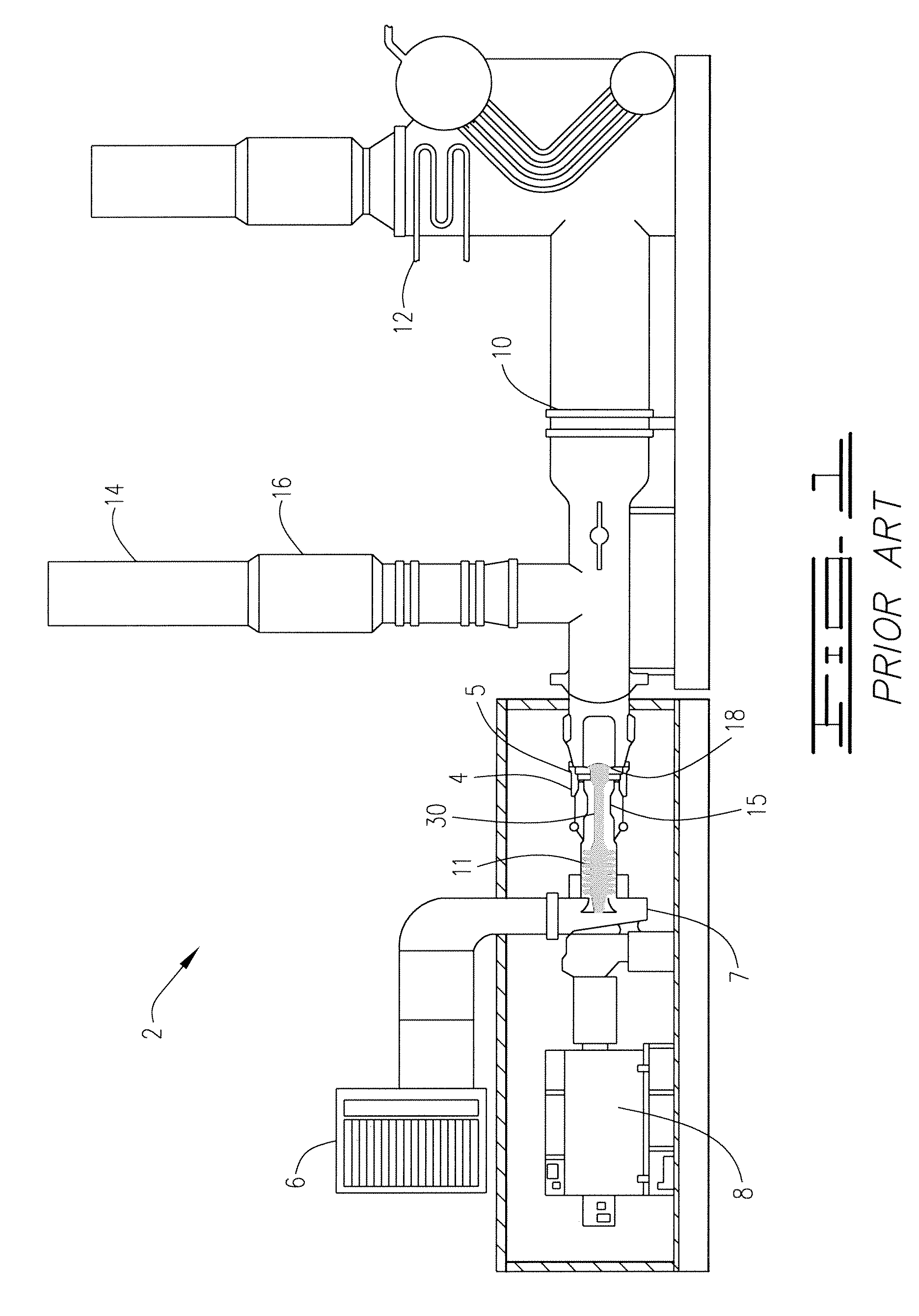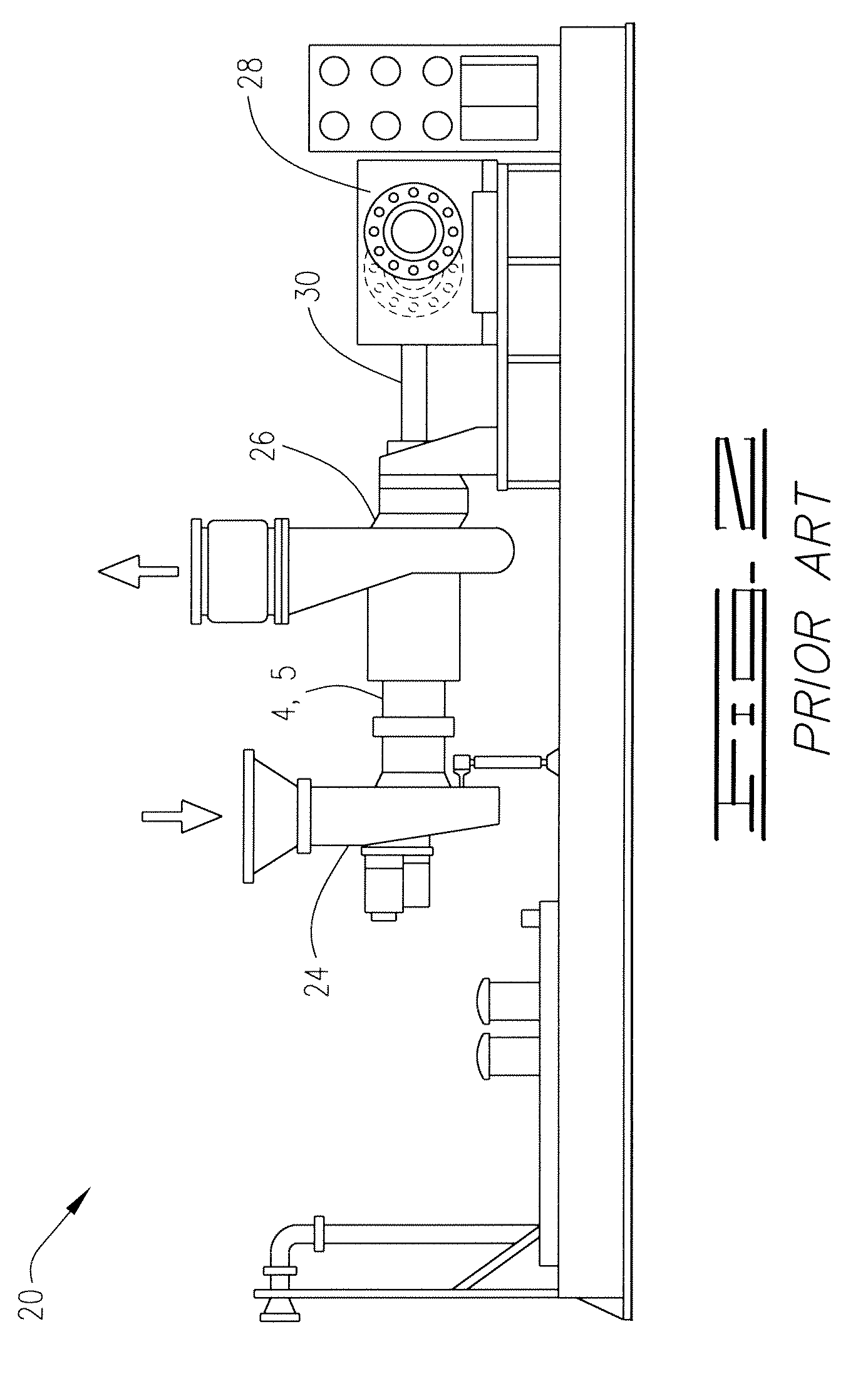Method and apparatus for boosting gas turbine engine performance
a gas turbine engine and performance technology, applied in the direction of gas turbine plants, machines/engines, jet propulsion plants, etc., can solve the problems of reducing the resulting power output of the engine to as little as 35% of its rated power output, and no method of incorporating these sources into gas turbine based power systems, etc., to achieve the effect of improving the performance of the pipeline system and increasing the pressure of the fluid being transmitted
- Summary
- Abstract
- Description
- Claims
- Application Information
AI Technical Summary
Benefits of technology
Problems solved by technology
Method used
Image
Examples
example
[0059]A Solar Saturn 20 gas turbine compressor drive engine having a rated shaft power output of 1.4 MW at ISO conditions is operated at a site wherein the site elevation is 2900 feet above sea level, the ambient air temperature is 120° F., and the ambient relative humidity is 0.1. The Solar Saturn 20 engine is first operated with direct intake of filtered air from the atmosphere and is used to drive a natural gas compressor. At these atmospheric air conditions and an altitude of 2900 feet, the engine will operate at an efficiency of 0.2032 and provide an engine shaft power output of 0.9423 MW. The net power provided to the gas compressor which is driven by the Solar Saturn 20 engine will be 0.731 MW.
[0060]In accordance with the present invention, under these same atmospheric and elevational conditions, an inventive boost system 100 using an electrically driven centrifugal boosting fan 102, a pre-boosting evaporative cooler and humidifier 116, and a post-boosting water coolant syste...
PUM
 Login to View More
Login to View More Abstract
Description
Claims
Application Information
 Login to View More
Login to View More - R&D
- Intellectual Property
- Life Sciences
- Materials
- Tech Scout
- Unparalleled Data Quality
- Higher Quality Content
- 60% Fewer Hallucinations
Browse by: Latest US Patents, China's latest patents, Technical Efficacy Thesaurus, Application Domain, Technology Topic, Popular Technical Reports.
© 2025 PatSnap. All rights reserved.Legal|Privacy policy|Modern Slavery Act Transparency Statement|Sitemap|About US| Contact US: help@patsnap.com



